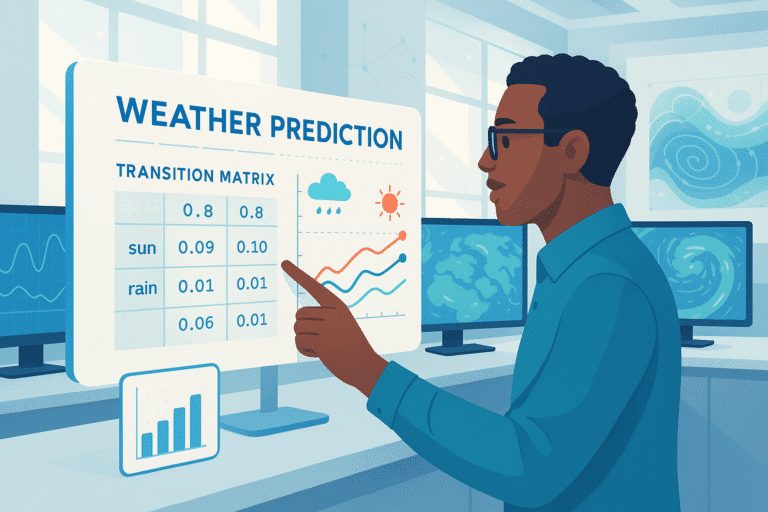Julia is a modern programming language that is both powerful and increasingly popular in the fields of data science, scientific computing, and artificial intelligence. Although it hasn’t yet reached the top tier of popular languages—dominated by giants like Python, R, or MATLAB—it represents a contemporary vision of technical computing, with its adoption being aimed at demanding niches such as HPC, mathematical modeling, and high-performance machine learning. While Julia is currently a daring bet against established norms, it has the potential to become the language of the future for those unwilling to compromise on speed and productivity. Discover why this language is worth exploring and how it could transform your coding experience!
What is Julia?
Julia is a high-level, open-source programming language, created in 2012 by Jeff Bezanson, Stefan Karpinski, Viral B. Shah, and Alan Edelman. Its aim? To merge the speed of high-performance computing languages like C with the readability and simplicity of a language like Python.
Even with a relatively modest community, Julia struggles to break into the top 10 most-used languages. However, it addresses major issues such as the “two-language” problem by integrating simplicity with native performance without sacrificing expressiveness.
Julia, embraced by the scientific community, is highly valued for handling massive amounts of data, numerical simulations, mathematical modeling, and statistical analysis. Although its ecosystem is young, it is rapidly maturing, and its multiple dispatch capability makes it a unique tool for research and engineering.

Why learn Julia?
Performance akin to machine-level speed
Julia eliminates the traditional trade-off between productivity and speed: its JIT (Just-In-Time) compilation produces code as efficient as C, while maintaining clear and expressive syntax. It is perfect for numerical simulations, large-scale data analysis, or resource-intensive algorithms.
An accessible syntax for scientists and developers
With a style similar to Python and compatibility with traditional mathematical notations, Julia reduces the learning curve. Beginners can learn to code and write functional programs within a few hours, while experts appreciate its typographical precision for complex calculations.
Smooth interoperability
Need to utilize Python libraries like NumPy or TensorFlow? Julia can directly call Python, R, C, or Fortran by using native wrappers. This is a significant advantage for gradually transitioning existing projects or leveraging the strengths of multiple ecosystems together.

Integrated parallelism and distributed computing
A growing ecosystem
With over 10,000 packages available in 2024 (including Flux.jl for ML, DifferentialEquations.jl for modeling, or Pluto.jl for reactive notebooks), Julia is swiftly addressing its initial shortcomings. Its detailed documentation and active community (particularly in academic research) create a viable environment for professional projects.
Did you know? Institutions like MIT and the Federal Reserve Bank of New York use Julia for critical tasks. Is it time for you to start?
How to install Julia and write your first program?
- Visit julialang.org to download Julia.
- Install the software according to your operating system (Windows, Mac, Linux).
- Launch the REPL (Read-Eval-Print Loop), or install the IJulia package to code in Jupyter Notebook.
println(“Hello, Julia!”)
This simple script prints a message to the console. Quick, clear, and effective.

What are the basics of Julia?
Basic Concept | What to Know |
Variable Declaration | Julia automatically detects the type of each variable. |
Control Structures | If, for, while statements are written as they are in Python, with clear and intuitive syntax. |
Function Definition | Simple syntax: function square(x) return x^2 end |
Collection Types | Julia offers multiple structures: Arrays: [1, 2, 3] Dictionaries: Dict(“a” => 1) Tuples: (1, “a”) |
Key Feature | Multiple dispatch allows the execution of different versions of a function depending on the types of the arguments, providing more flexibility and efficiency. |
Concrete use cases
Julia’s practical applications include data science, where it manages data via the DataFrames.jl library. In machine learning, Julia enables the building of neural networks through Flux.jl.
For visualization, interactive plots can be created with Plots.jl. Julia is also employed in numerical simulation, especially for differential calculations, fluid dynamics, or physical modeling.
Julia vs Python, R, Matlab
Criteria | Julia | Python | R | Matlab |
Speed | 🔼 Excellent | Good | Average | Good |
Syntax | Simple | Simple | Specialized | Technical |
Open Source | Yes | Yes | Yes | No |
Specialty | Numerical computation | Versatile | Statistics | Engineering |

How to progress quickly?
To effectively advance with Julia, start by creating small, tangible projects, such as a mini-calculator or a simple data visualization. This approach allows you to quickly apply the foundational concepts of the language. Also, participate in the challenges on the JuliaLang Discourse forum, an active community where you can learn by engaging with others’ ideas.
Take the time to explore open-source projects on GitHub, focusing on repositories with the #Julia tag: it’s an excellent way to discover varied use cases and absorb best practices.
Finally, regularly consult the official Julia documentation and test code snippets directly in the REPL (the interactive Julia environment) to experiment and expand your understanding.
Conclusion
Julia programming is more than just a buzzword: it’s your gateway to a modern and fast language built for the future of science and data. With its accessibility, performance, and growing adoption, it deserves a prime spot in your developer toolkit.










